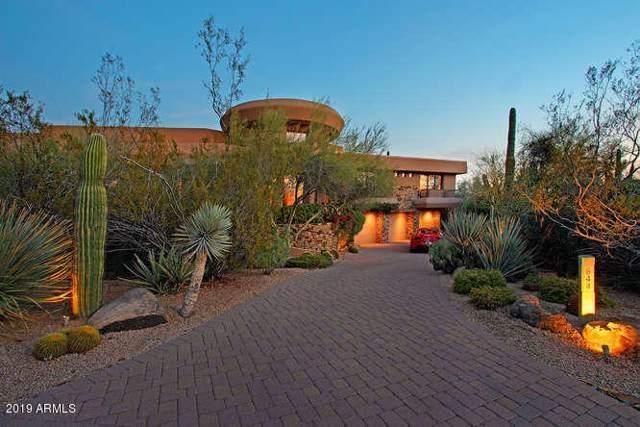
HO5 Insurance policy for Arizona home
Insurance is complicated, even the essential owner’s coverage. The good news is that insurance groups are operating to simplify things and provide greater comprehensive insurance.
According to the Insurance Information Institute (III), robbery losses were the fourth most common loss kind in house owner’s insurance claims. If to purchase the typical HO3 house owners’ product, you can find you have limited coverage on the occasion of a loss.
Six percent of insured homes suffered a homeowner’s claim in 2017, according to the I.I.I., and plenty of house owners locate their insurance coverage inadequate after a loss. From theft to hurricane-force winds, Americans rely on their homeowner’s insurance coverage because of the front-line defense against private disaster. This is why purchasers should recall buying the HO5 insurance policy shape, which offers the broadest coverage available to insure your home against losses.
HO3 vs HO5 Insurance Comparison. The Differences in Coverage HO5 vs HO3 Home Insurance Policy.
The HO5 insurance policy is a comprehensive coverage form, supplying owners several vital benefits over and above the HO3. Here are the primary variations between the two forms.
Your coverage divides bodily harm to your own home and its contents into two foremost categories:
- Dwelling and Other Structures. The dwelling is composed of your home shape consisting of the body and inner walls. Other structures are systems on your home indifferent from your own home – a detached garage, a shed, or a fence, for example.
- Personal Property. Personal belongings insurance usually calls as “contents” insurance and consists of such things as furniture, clothing, and appliances.
The HO3 and the HO5 policy coverage protect your dwelling and other systems in similar ways, the usage of an “open perils” basis. This way the insurance organization covers your home and it’s systems for “direct loss” because of any peril besides the ones excluded. Some of the exclusions consist of flood, mold, wear and tear, and others. This is often stated as “special form insurance” inside the coverage industry.
However, insurance for your private belongings is part of the main difference between the 2 forms. Personal property is anything you can pick up and walk out of the home with. Furniture, jewelry, kitchenware, silverware.
The primary differences of the HO5 insurance policy form
One of the primary differences of the HO5 is that it covers your non-public assets more broadly than the HO3. The HO5 policy offers broader insurance with an open-perils basis. The HO3, in contrast, offers extra limited coverage. Rather than insuring your contents on an open-perils foundation in which the insurer covers everything except the few exclusions outlined in the coverage, the HO3 covers your non-public assets on a “named-perils” basis.
Under the HO3, the insurer lists what’s covered, together with 17 perils the insurer lists in the coverage. These embody the most commonplace losses that arise to a home’s contents, which include fire, lightning, hail, robbery, vandalism, and a loss that occurs due to the burden of ice, snow, or sleet.
That can also sound like adequate insurance. However, compare the insurance for your contents to be had below the HO5. The HO5 policy offers “open perils” insurance on contents, which is plenty of broader coverage. Unless excluded in the policy, the homeowner might have insurance for most losses to the home’s contents.
Specific Limits under Personal Property in Coverage Forms
Another key aspect of the owner’s policy insurance is the “Special Limits of Liability” in your policy shape. Many objects like jewelry, furs, silverware, coins, and guns have limited insurance, especially within the event of a theft loss. Don’t forget, these special limits cap the quantity of payout you declare. Here are only some of the unique limits that would affect you if you have a claim.
If you feel comfortable with these limits of coverage, the HO3 is a good choice. If you’re concerned approximately those caps, then keep in mind an HO5 policy. The HO5 presents you with the capacity to increase any special limits to a limit you choose. This capability to boom your special limits of insurance and the addition of masking your personal assets with open perils are two essential blessings of the HO5 policy over the HO3 coverage.
Wait, there’s more!
Under the HO3 contents portion of the coverage, your insurer covers your personal belongings the use of what’s called “real cash fee” (ACV) when reimbursing you for a loss if a person steals your tv set and it’s 5 years old, your insurer will not pay the entire price to replace the unit. It can pay the item’s ACV, which means its replacement fee minus depreciation.
You can generally upload an endorsement to the HO3 homeowner’s insurance to encompass replacement price on your personal assets for an additional value. With the HO5 policy, however, that insurance is automatic, a big bonus for homeowners.
Bank Requirements Could be Insufficient:
Most banks require homeowners to purchase at the least the HO3. While this can be ok for some homeowners, many owners in Arizona prefer the HO5 insurance policy.
Here you can read more about TYPES OF COVERAGE IN A TYPICAL HOMEOWNERS’ POLICY.